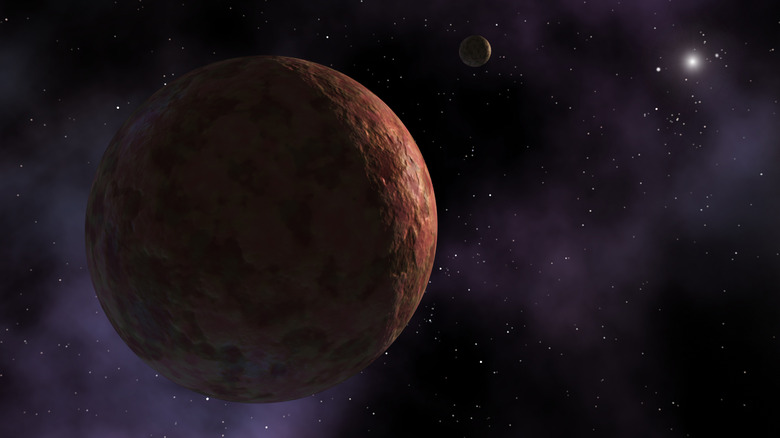New World Discovered In Our Solar System Could Kill Our Hopes And Dreams For Planet Nine
Astronomers across the globe constantly monitor space for glimpses of new objects beyond the solar system. In fact, NASA is tracking a rare planet unlike anything in our solar system — Enaiposha (GJ 1214 b), an exoplanet could be a super-Venus. Within the solar system, though, researchers have been keeping their eyes peeled for a ninth planet — since Pluto is not a planet anymore — and astronomers from the National Astronomical Observatory of Japan have discovered a new object that reduces the chances of a Planet Nine existing.
Designated as 2023 KQ14 and nicknamed Ammonite, this new object is categorized as a sednoid — now one of just four objects with a highly eccentric orbit beyond Neptune. It was discovered using the Subaru Telescope in Hawaii in 2023 as part of the Formation of the Outer Solar System: An Icy Legacy (FOSSIL) survey project. The researchers followed up on those observations using the Canada-France-Hawaii Telescope in 2024, as well as reviews of archived image data. What they discovered are details about Ammonite's elliptical orbit — published in Nature Astronomy on July 14, 2025 — that shrink the chances of there being a ninth planet. Previously, researchers had found that the other sednoids all orbit the sun at a relatively similar orientation; they took that as a potential indicator of Planet Nine's gravitational influence. But Ammonite's orbit is oriented very differently, so it's unlikely there's a distant planet to blame for the sednoids' elliptical paths.
The National Astronomical Observatory of Japan's Dr. Yukun Huang, an author of the study, said in a statement, "The fact that Ammonite's current orbit does not align with those of the other three sednoids lowers the likelihood of the Planet Nine hypothesis. It is possible that a planet once existed in the Solar System but was later ejected, causing the unusual orbits we see today."
The significance of Ammonite's elliptical orbit
There have been mysteries about the planets in our solar system that have gone unsolved for years — such as evidence of water on Mars — but there are no mysteries about the eccentric, elliptical orbit of Ammonite (2023 KQ14). For the Nature Astronomy study, the National Astronomical Observatory of Japan's FOSSIL team was able to compile 19 years worth of observational data to accurately estimate Ammonite's orbit and use computational resources to conduct numerical simulations. They discovered that this sednoid has had a stable orbit for 4.5 billion years.
Ammonite's orbit is similar to that of Sedna, a dwarf planet that also has one of the most distant orbits in the solar system — even farther than the staggering amount of time to travel to the farthest planet from Earth in our solar system (Neptune). While Sedna's proximity to the sun ranges from 76 to 900 astronomical units, Ammonite's ranges from 66 to 252 astronomical units. Also, this current elongated orbit is different from the other three sednoids that scientists have discovered, but based on the analysis of observational data, these four objects had incredibly similar orbits about 4.2 billion years ago. This finding indicates that there are many more complicated processes happening in the outer realm of the solar system than researchers thought.
The National Astronomical Observatory of Japan's Dr. Fumi Yoshida, who worked on the study, said in a statement, "Ammonite was found in a region far away where Neptune's gravity has little influence. The presence of objects with elongated orbits and large perihelion distances in this area implies that something extraordinary occurred during the ancient era when Ammonite formed. Understanding the orbital evolution and physical properties of these unique, distant objects is crucial for comprehending the full history of the Solar System."

